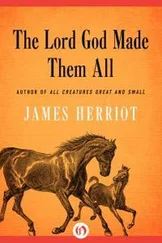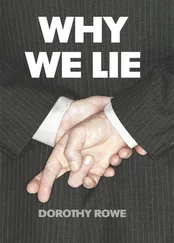“Just before the man took the picture he made a face at me,” the Rumanian explained. “I jumped back.”
“But surely you didn’t say anything about a ‘curse of death’?”
“No. But as the man was going to his car he called me over and asked if I thought a candlestick could carry a curse, and to get rid of him I said, ‘Maybe.’”
That afternoon the first excursionists stopped at the tell, asking to see the Candlestick of Death, and the next morning a tour bus arrived. Cullinane was distressed and sought out Eliav, to whom he said, “I’ve worked hard to protect the good name of this dig. Six of the applicants who volunteered to help us were publicity hounds, and I kept them off. Like Stikkler of Geneva.”
“We saw your sensible interview when the Chicago reporter wanted you to say that you were expecting to dig up new revelations about the Bible.” Eliav lit his pipe.
“And yet we are digging among the foundations of three great religions. We’ve got to keep it clean.”
“Do you expect to find materials relating to Christianity?” Eliav asked.
“Materials? You mean manuscripts … proofs? No. But insights? Yes.” The two men fell silent, and after a while Cullinane asked, “As a Jew, don’t you hope to find something that will illuminate …”
“Why do you suppose I work on these digs?” Eliav asked. “Each time I sink a pick into the earth, I hope, in a vague sort of way, to turn up something that will tell me more about Judaism.” He hesitated. “No, that’s wrong. Not tell me. Tell the world. Because the world needs to know.”
The responsibility of the task on which the two men were engaged caused them to look with disgust on the newspaper stories, for although neither expected to uncover specific new materials relating to Judaism or Christianity or Islam, each hoped that Makor might provide some serious information which would advance understanding of the societies in which these religions arose. “From now on we keep newspapermen and tourists out of here,” Cullinane concluded, but even as he spoke, Tabari appeared with a cable from Chicago:CULLINANE STOP REGARDLESS OF WHAT OTHER FINDS THE ISRAELI GOVERNMENT MAY DEMAND FOR ITSELF IT IS IMPERATIVE THAT YOU SECURE CANDLESTICK OF DEATH FOR CHICAGO PAUL J. ZODMAN
Cullinane shook his head and gave Tabari the job of reassuring Zodman that it would be arranged. Chicago would get the treasure.
On the next day such trivia were forgotten, for Eliav reported that workmen in Trench B had uncovered positive proof that they were digging in Crusader ruins. “An inscription which can be dated 1105 C.E. John, it looks as if we’ve hit the castle!”
As word of the discovery sped through the kibbutz, a strange thing happened: clerks counting eggs, cooks at work in the kitchen, boys in school and the volunteers from the various countries stopped what they were doing and hurried silently to the tell, where they stood in expectant groups, watching as the archaeologists tapped gingerly at pebbles while girls with brushes cleared away the debris. From thousands of miles away men had come to probe into the secrets of the tell and at this hour they had struck a significant thing. It was a magnificent moment.
But so many spectators crowded the edges of Trench B that Tabari had to move them back, lest the sides collapse; and as the crowd withdrew, ten of the stronger workmen jumped down to haul away the last of the rubble. But the rock bearing the inscription they did not touch, for it would first have to be photographed in situ and then sketched by the camp draftsman in the precise position in which it was found, because from such photographs and drawings some imaginative theorist who had never seen Makor might construct an explanation which would illuminate a whole period of history. When the pictures were taken, Tabari called his workmen out of the trench and spectators were allowed to file in and see for themselves the first major find at Makor. Cullinane waited his turn, and when he saw the beautiful old stone, carved so carefully by some medieval guildsman, he experienced a rush of joy. The castle existed! The first stage of the dig was a success, and in succeeding years the beautiful ruins could be leisurely explored. In the meantime he filled out the provisional card.
When Tabari saw the date he objected, pointing out that in this instance the stone could be ascribed with finality to the year 1105 C.E. because there was documentary evidence in Wenzel of Trier’s Chronicle that Count Volkmar of Gretz had died that year, but Cullinane observed dryly, “We know when he died, but we don’t know when the stone was carved and let into the wall. More likely around the date I suggest.”
An unfortunate atmosphere now developed at the dig, the kind of thing an experienced administrator tries to forestall; nothing of even minor importance had been uncovered at A, so that the team working at that site began to lose spirit, while the gang at B greeted each morning eagerly, wondering what evidence they would lay bare that day: perhaps Crusader dining plates decorated with fish, pieces of chain armor, carved fragments from a chapel, dozens of stones which could impart a very real sense of a castle in which knights had lived and from which they had gone out to fight. During one period of three weeks in June, the diggers found stones that were heavily charred—even cracked apart by some forgotten heat—and they speculated on what accident could have built up a blaze so great as to scar a whole section of castle. Digging at Trench B in those days was an exciting experience, and if one wanted a good example of the manner in which archaeology could uncover lost secrets it was there.
At the same time Trench A showed how a dig could go wrong, for it had obviously missed the main gate. After weeks of disappointing excavation Cullinane assembled his crew at the barren trench and asked, “What’s to do?” Eliav now admitted that the gate must stand well to the east, where Cullinane had suggested in the first place, and he advised abandoning the disappointing trench and transferring operations seventy yards eastward, but Cullinane said no: “At Trench B we’ve found the castle, and if the rest of the tell is unproductive we need to know that too.” To the disappointment of the Trench A kibbutzniks he ordered them to go ahead as planned, trying to convince them that “what you’re doing here is just as important as what they’re doing over there.” He found this a difficult thesis to defend.
So the gang at Trench A plodded through the unrewarding rubble until by brute strength they had thrown out enough soil to lay bare the three concentric walls that had guarded Makor. Sometime around 3500 B.C.E. men not yet identified had built the thick outer wall by throwing together huge stones in haphazard piles. Two thousand years later, well before the age of Saul and Solomon, some other unidentified group had built the sturdy middle wall. And two thousand five hundred years after that, at the time of the Crusaders, the inner wall had been erected, and it was a European masterpiece. How it had been penetrated and what part the castle fire had played in its destruction Cullinane, as a scientist, refused to guess. He supposed that after the completion of this final wall the sloping flanks had been repaved with rock, the most recent construction on the tell, a mere eight hundred years old. Attacking Makor could never have been a simple undertaking. Cullinane, visualizing the plateau crouched within the triple walls—they did not stand, of course, in three separated rings; all were crumbled and each grew out of its predecessor, but each also existed in its own unique construction—told the others, “All we’re looking for occurred within this little stone cocoon. We’ve laid bare the pattern but not the significance.”
Читать дальше

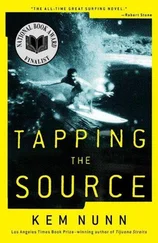


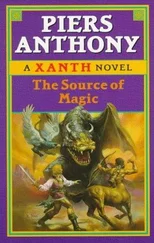
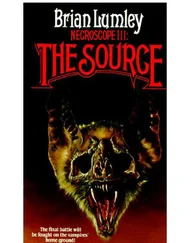
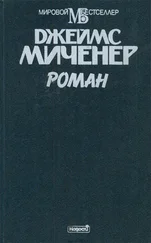

![Джеймс Купер - Пионеры, или У истоков Саскуиханны [The Pioneers, or The sources of the Susquehannah]](/books/395797/dzhejms-kuper-pionery-ili-u-istokov-saskuihanny-t-thumb.webp)
